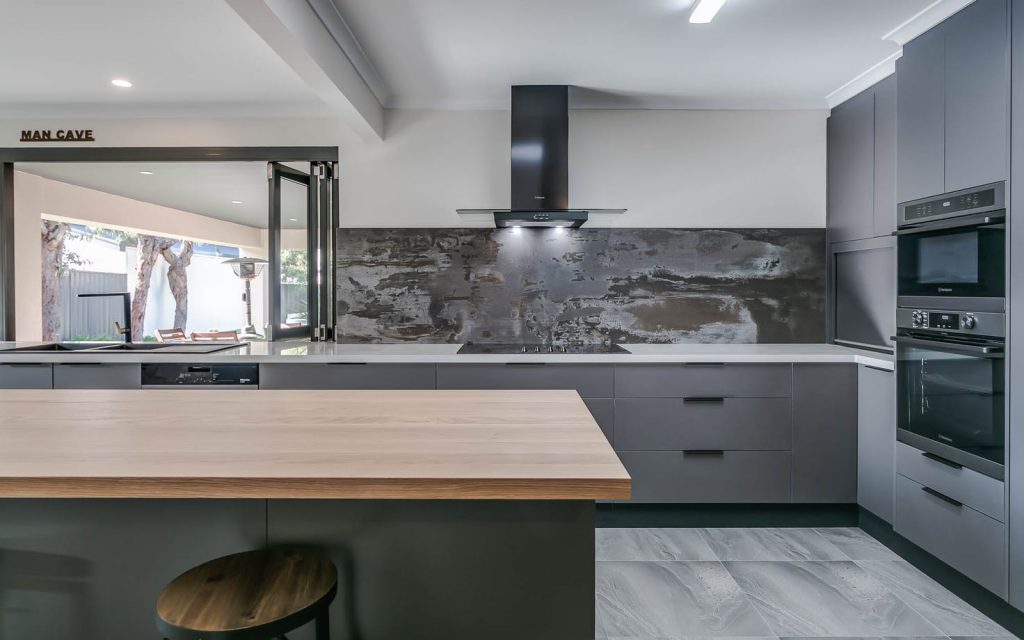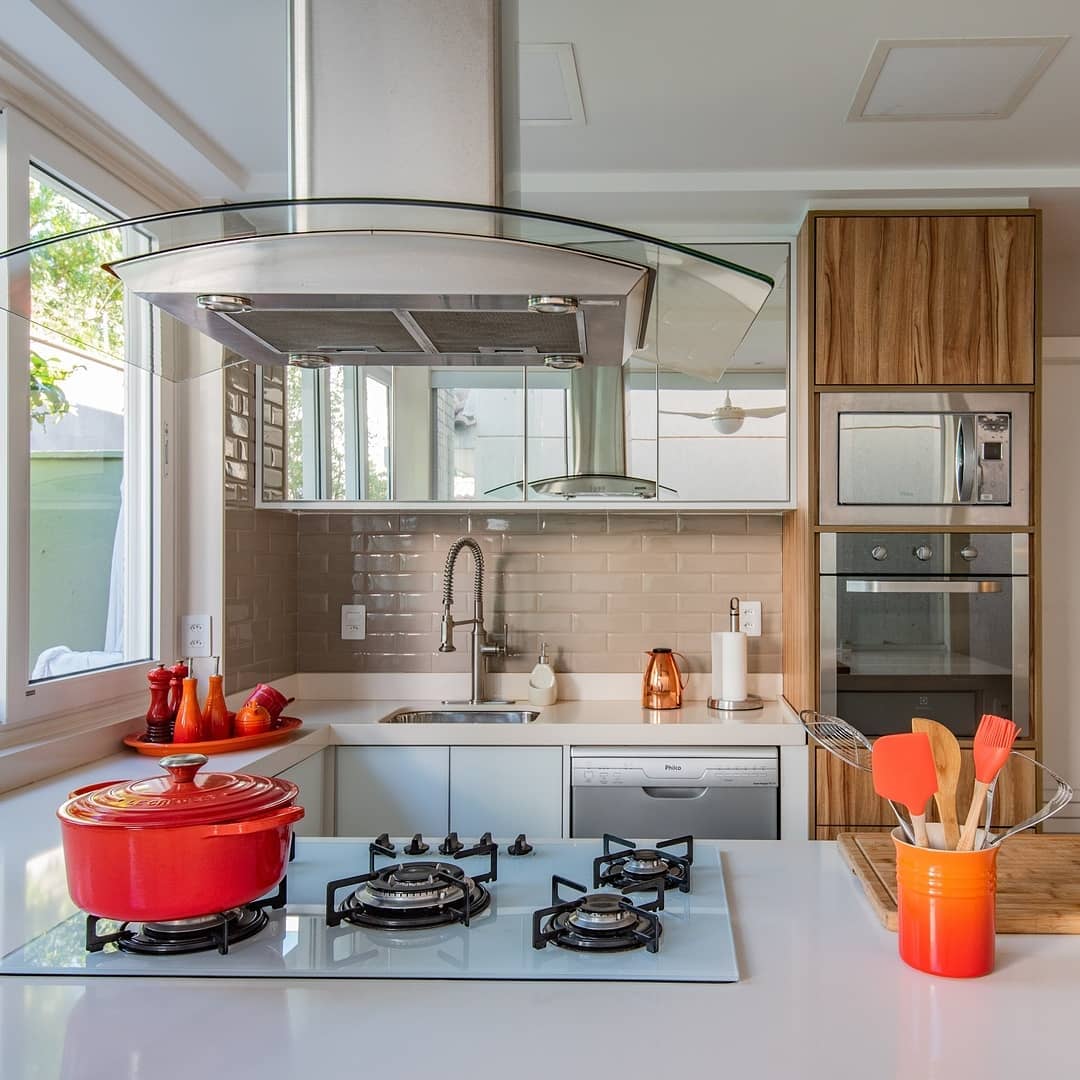Kitchens with splashbacks, upstands or tiles. Which is best?
When you’re designing your new kitchen, something to consider is how you’ll protect your walls from food and liquid splashes. Unless you don’t mind re-painting regularly, it’s best to have some kind of barrier up to protect them.
So, other than using specialist kitchen paint, your options are to fit your kitchen with splashbacks, upstands or tiles. Or a mixture.
In this blog, we’ll run through each option and look at their benefits to help you decide.
Worktops with upstands

What is an upstand?
An upstand is a thin strip of worktop that’s fitted to the wall above your kitchen base cabinets. Generally, homeowners choose upstands that match their worktops because they blend nicely and give a coordinated look. But you could choose a glass or acrylic upstand instead.
You can buy upstands to match most worktop materials. Just be sure to buy them at the same time to ensure you get an exact colour match.

What are the benefits of an upstand?
Upstands are mainly used for aesthetic purposes. They give your kitchen a tidy finish. But they’re also great if your walls are slightly uneven because they cover any gaps between the back edge of your worktop and the wall.
They do have some practical advantages. They provide a seal between your worktop and the wall to prevent liquids from running down behind the cabinets. And they give some protection from food splashes to the lower part of your wall.
However, as they’re generally only between 60mm and 150mm tall, they don’t protect your whole wall.
But that’s not a reason to be put off upstands. You can protect the rest of the wall in other ways instead.
You could:
- Paint the walls with scrubbable kitchen paint
- Add a splashback or tiles behind the areas most likely to get splashed, such as the hob and sink
- Fit a glass splashback above the upstand
- Lay tiles above the upstand
Kitchens with splashbacks

What is a splashback?
A splashback is a panel of material that’s fitted to the wall above your kitchen base cabinets. They are similar to upstands, but instead of only being 60-150mm high, they cover the whole area between your worktop and your wall cabinets. And they can go higher in areas where needed. Such as behind your hob.
Splashbacks can be made of the same material as your worktop, or you can opt for clear or coloured glass or acrylic instead.

What are the benefits of a splashback?
Splashbacks are very practical. They protect your walls from food splashes but also prevent damage from hot steam.
They’re easy to wipe clean too. And, because they’re one continuous piece of material, there are no annoying cracks or crevices for grease and food to get stuck in.
Choose the material carefully, though. A splashback needs to be stain-resistant. A bubbling pan of curry on your hob will splash spices such as turmeric onto the back wall. So, steer clear of porous worktop materials such as marble.
Splashbacks also tick all the boxes when it comes to aesthetics. And there are so many options in terms of design:
- Choose a matching worktop and splashback
- Choose a splashback that complements your worktop with similar tones
- Choose a splashback that contrasts with your worktop
- Choose a clear or coloured glass splashback
- Choose an acrylic splashback
If you’re going for a matching worktop and splashback, be sure to buy them at the same time to ensure you get an exact colour match.
Kitchens with tiles

Using tiles as a splashback
Most wall tiles are made specifically for use in kitchens or bathrooms. That means you can be sure they’ll be a practical choice for a splashback.
And they come in all sorts of shapes and sizes. So, you can fix them up the wall to whatever height you wish.

What are the benefits of a tile splashback?
The great thing about tiles is they come in a vast range of colours, shapes and sizes. And you don’t have to stick to a single colour either. You can mix and match to create unique designs and add a very personal touch to your kitchen.
They’re very practical too. Ceramic and porcelain tiles, in particular, are non-porous, making them stain-resistant. But be careful if you choose a stone tile, such as slate, marble, granite or travertine, as they often need to be sealed to protect them from stains.
The only downside of tiles is that the grout between them is porous. So, it will get dirty over time.
All the worktops at SEH Interiors come with the option of adding matching upstands or splashbacks. If you need help choosing your perfect worktop and upstand or splashback combo, please get in touch.


